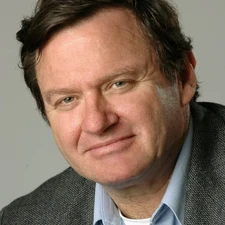Yoram Rubin

The 2016 Henry Darcy Medal is awarded to Yoram Rubin for seminal work in stochastic groundwater hydrology, parameter estimation and hydrogeophysics, and for developing tools that enabled practitioners to make operational decisions based on data.
Yoram Rubin made important contributions to various fields related to subsurface hydrology, notably stochastic groundwater hydrology, contaminant transport in aquifers, and hydrogeophysics. He is considered one of the founders of the latter discipline. Rubin is also recognised for his outreach activities that have allowed scientific knowledge to be made operational for practitioners that need sound support for their decisions in groundwater clean-up projects and other environmental projects involving subsurface flows of water and substances. Rubin’s work covers theoretical, modelling and applied components. The rare ability to bridge theory and applications is amply demonstrated by his impressive publication record, including a textbook on applied stochastic hydrogeology, which has become a reference for anyone active in that field. Rubin’s methodological contributions focus on quantifying subsurface properties and flow processes and the uncertainty associated with those estimates. His ground-breaking work has helped improve the understanding of terrestrial environment system functioning, as required for the development of optimised management strategies. He pioneered the development and application of inverse approaches for tackling complex subsurface flow and transport. In the 1990s, he was among the first to recognise the potential of geophysics to provide quantitative estimates about both the fabric of the subsurface and fluid flow. His pioneering research contributed to the birth of the new field of hydrogeophysics through several avenues, including the development of new approaches to extract meaningful information from geophysical signatures and the development and field application of estimation approaches for fusing hydrological and geophysical datasets. Rubin pioneered the field of groundwater driven probabilistic health risk assessment. His early work provided fundamental stepping stones to further develop methods aimed at characterising the uncertainty in solute concentration and human exposure. Important outcomes of the probabilistic risk work led by Rubin and co-workers are the goal-oriented subsurface site-characterisation methodologies that enable contaminant site managers to better allocate financial resources towards maximum uncertainty reduction in risk estimation. Rubin made his codes widely accessible to the scientific community and practitioners. The outreach work branched out into the development of tools for researchers and practitioners alike, in the form of a community‐based, open‐source computational platform for Bayesian characterisation of uncertain parameter fields. While originally targeting hydrogeological applications, it is now used in other areas as well (e.g., tunnelling, coupled surface‐subsurface flow, and various geotechnical applications). It provides an easily accessible tool for applications and a platform for broad‐based, long‐term development, built to meet the challenges brought upon by the ever-increasing complexity of modern computational tools, the diversity of data types and their breadth. Another example is myObservatory (mO), a management system that allow users to collect, store, share and analyse environmental data of different forms (notes, pictures, videos, audio, sensor data). Users can access mO through desktop and mobile tools.
